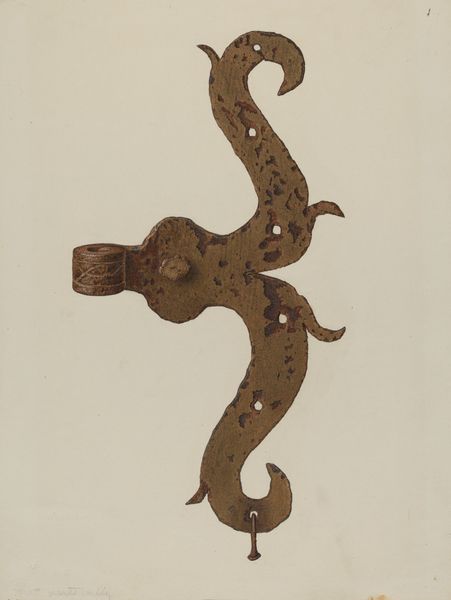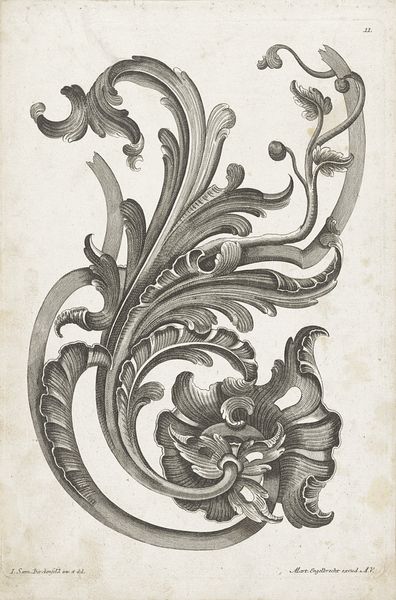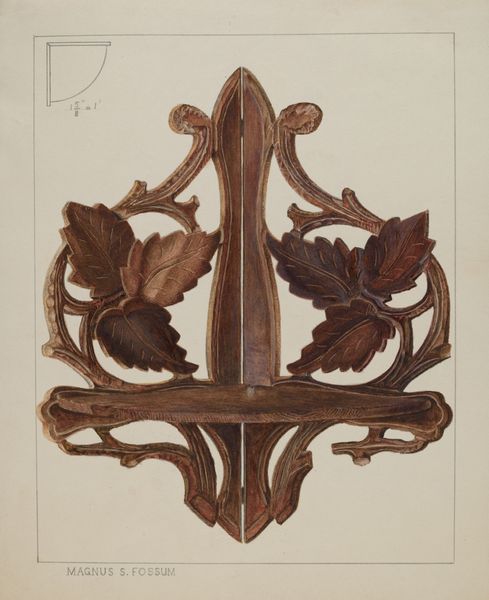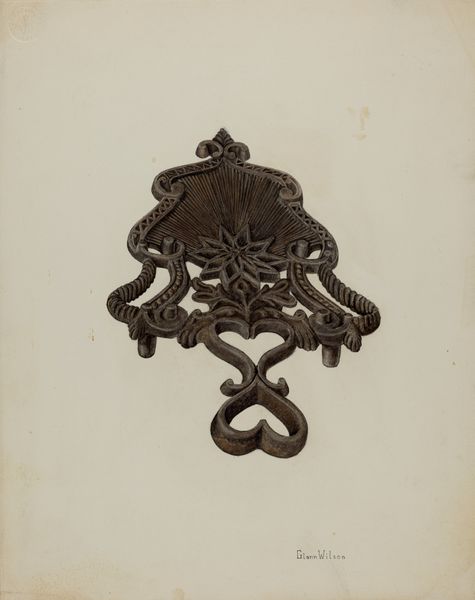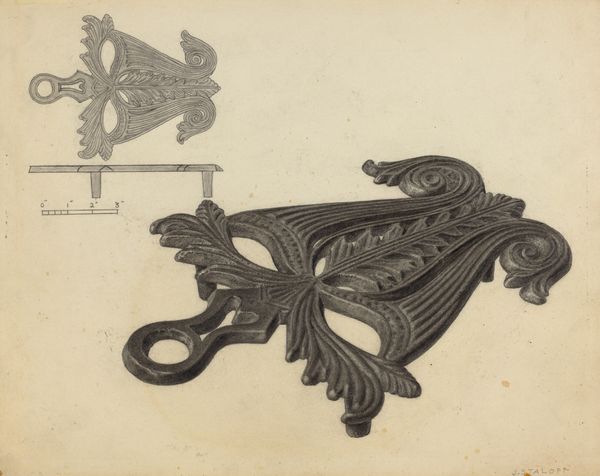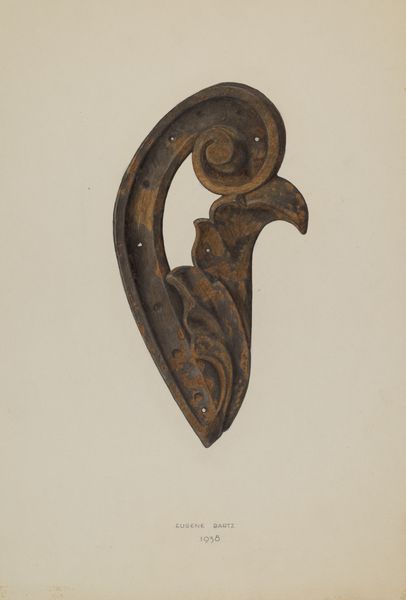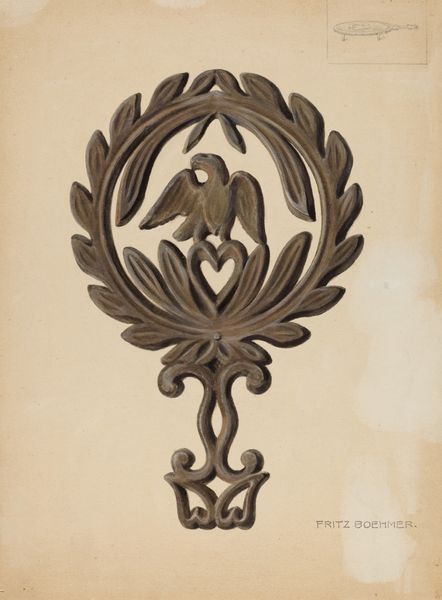
drawing, metal
#
drawing
#
metal
#
sketchbook drawing
Dimensions: overall: 41.2 x 28.1 cm (16 1/4 x 11 1/16 in.) Original IAD Object: 8 3/4" long; 6 3/4" wide
Copyright: National Gallery of Art: CC0 1.0
Editor: Here we have Elmer Weise’s "Flat Iron Stand," made around 1938. The metalwork seems so ornate for such a utilitarian object, it makes me wonder, what social purpose did adding these floral details serve? Curator: That’s an insightful question. Consider the social context of the 1930s. This was a period of both economic hardship and a growing middle class. Objects like this could signal aspirations of upward mobility. Perhaps owning something beautiful, even if functional, offered a small comfort during a challenging time. But I wonder if this metalwork served a particular market sector at all? Was metalwork becoming feminized? Editor: That's interesting. So you are saying something functional could give a sign of your role in the community, even if subtle? Curator: Exactly. The choice of design elements – floral motifs, the level of detail – speaks to a specific aesthetic and, potentially, a target consumer. Was this meant for a particular class, race or gender? I'd also wonder about where the flat iron stand would have lived within a house. A visible object can symbolize something about the resident. And you may want to find any examples of Weise who has drawn similar items. Is there an industrial aesthetic that we're missing, as well? Editor: This definitely offers a new angle to consider; thinking about social signaling via everyday objects makes me see this seemingly simple piece as carrying so much more historical weight. Curator: And vice-versa; it has made me realize how gender roles or marketing practices have affected consumer preference. Thank you for your perspective, it enriches mine!
Comments
No comments
Be the first to comment and join the conversation on the ultimate creative platform.
